Adrienne's Story
THIS BLOG IS PART OF OUR ELEVATING VOICES SERIES IN PARTNERSHIP WITH 
My name is Adrienne St Clair. I work as a botanist with a local government in Portland, Oregon. Working in natural lands management means that I work toward equitable access to nature, and all the benefits of a clean environment, while considering how to maintain and restore healthy plant populations in that space. I was born and raised in the Pacific Northwest, and grew up between the ocean and the rainforests of the Cascades. When I travel to either of these places and open the car door for the first time, the smell of the salty ocean air or the humus rich soil of the forest seem to fill in all the cracks and I feel my body relax. 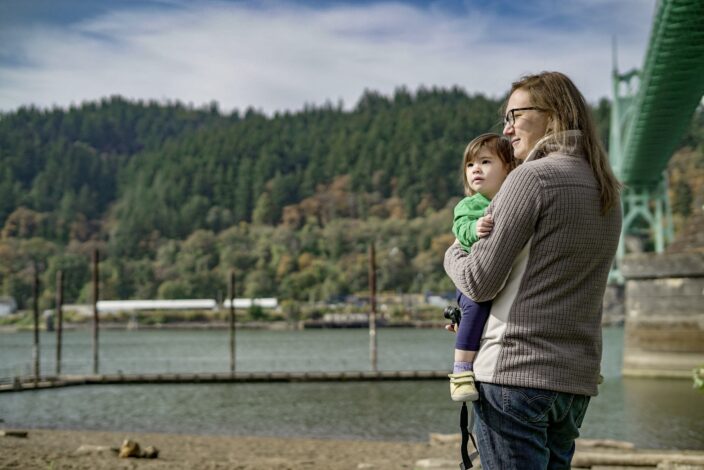
Parenthood, Nature, and a Pandemic
I became a parent in June of 2020. The beginning of the pandemic was a difficult time for any big life changes, and becoming a parent was no exception. Through the last months of my pregnancy, my plans around my birth and the fourth trimester had to shift quickly. I am a queer single parent by choice, so getting pregnant took two years of working with a fertility clinic. I had a whole of horde of people just waiting to hold a baby and help cook and generally just be around.
Covid swept in and I had to choose just a few close people to see regularly. Many people met my daughter for the first time when there was a lull in the transmission levels and we all felt comfortable enough to meet out at a park together. It was my daughter's first birthday. One year. One, very long (and short) year. Something that held my sanity through that year (and the year and a half since) has been going for walks in my neighborhood.
I think many of us found refuge in the outdoors during the pandemic.
We found a new relationship to the out of doors—a respite from the four walls around us that was safe and welcoming in a way it never had been before. Quite literally a breath of fresh air. In my last months of pregnancy, walking was the only exercise I could afford myself. I quickly realized that when I am walking is when I have my best thoughts. Problem solving comes easier, otherwise endless loops of anxiety are shortened. Everything seems easier when I’m walking. 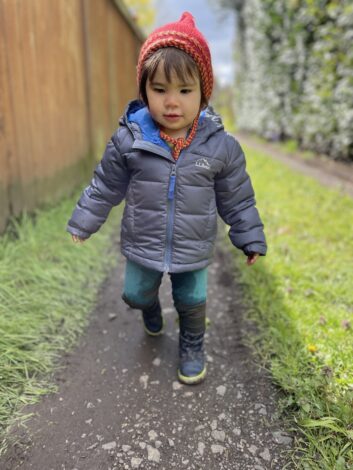
In the months after having my daughter I came to realize how important they were for her, too. At three months when her eyesight started getting better, the patterns of dark leaves against a light sky background could keep her attention for minutes…what seemed like hours.
As she got older, we kept up our walks. Seeing her enjoyment of it was what got me outside on days when I didn’t feel up for it.
As it turns out, she loves the time so much her first sentence was “let’s take a walk”, said with the insistent tone of a toddler and repeated until I acquiesced. “Okay. You’re right. We should take a walk.” Our walks don’t have to be long. They can be 15 minutes after dinner and she is learning the route, the cats to visit, and the flowers to smell. She knows where the apple tree is, where the apples she finds moved from “not ready yet” (stated a hundred times in a toddler voice), to “perfectly ripe,” to “now they’re for the raccoons to finish”.
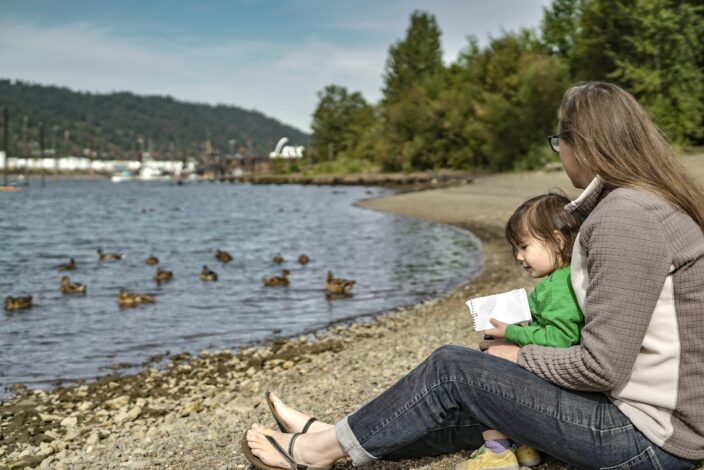
Benefits of Time in Nature
The evidence around the benefits of nature for the health and well-being of both children and adults are numerous. While I have heard all of the stats and sound bites, I still have to remind myself to get outside. For years I’ve been telling myself that I will probably feel better if I go outside, go for a walk (but it’s raining), go for a hike (but i don’t have anyone to go with).
Honestly, I think it was seeing how my daughter reacted to going outside that finally flipped a switch Wow, look how much better we all feel when we’ve gone for a walk.
Most of my time spent outside has been through my work. Teaching outdoor education, working outside, year round for the nursery, and in my current field work. I think something I love most about working with plants is that my work changes with the seasons. I find a rhythm to my days and months. I find comfort in the coming of the rains after a warm summer and breathing the air in those first few days of cold autumn mornings connects me to my timeline in memories of years before. 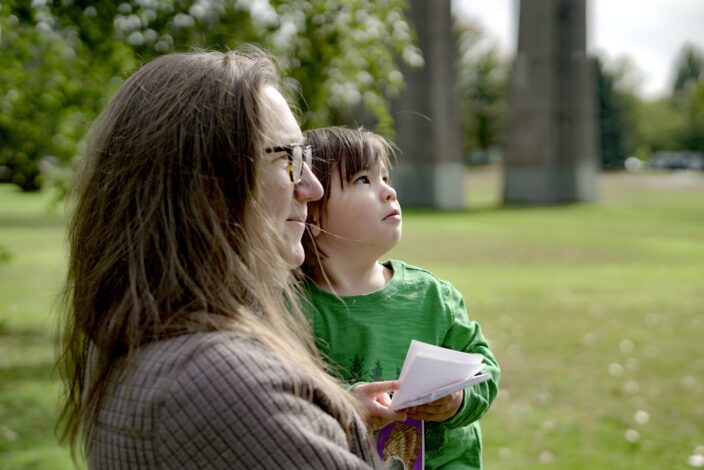
Cultivating a Connection to Nature
Some cultures have a connection to the natural world as inherent in their identity. The culture I was raised in has long ago lost this understanding and it has meant generations of decisions made to the detriment of ourselves and our environment. I feel this loss for myself, my daughter, and my culture. Through my work, I have gained a bit of that connection back and am committed to do the personal work needed to continue it. I am not sure where my daughter’s interests or skill sets will take her.
With her, I hope to instill that connection to the natural world so she can make the tough decisions that are to come.
For the people around me, I hope to build a common culture that recognizes this connection. I think that only with this understanding we will be able to tackle our own survival with the challenges of climate change. 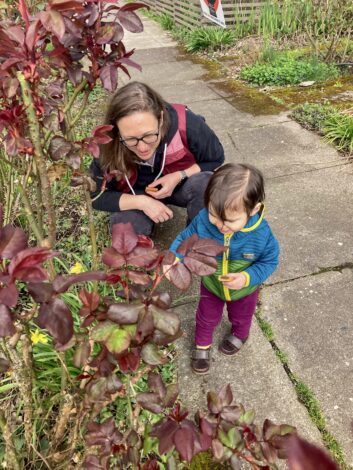
My Path to Conservation
My path into conservation wasn’t direct. I had always had an interest in science, and I always found restoration interesting because it felt like a meaningful application of science. I didn’t go straight to college after high school, but instead taught outdoor education for many years. While I had begun my time teaching wildlife science, I found myself teaching botany and was hooked. I had found the perfect way to engage students in the natural world and the medium with which to do it.
Plants were perfect for it, they never ran away from you as you walked up! After attending graduate school in Chicago for Plant Biology and Conservation, I am now able to apply that knowledge on a regional scale. How can we help plant populations to be healthy and sustainable with all this fragmentation of their habitat? How can we help our ecosystem thrive within a changing climate? The questions are large and endless and I am grateful to have such a beautiful canvas on which to ask them.
My Advice for Other Parents
My biggest piece of advice for parents engaging in the natural world with their kids is to take a step back, use a few less words, and watch what it is that’s catching their attention. As with most things, my daughter seems most engaged when she’s emulating my engagement. When I lean down to quietly look at a flower, she is likely going to bend down and look at it herself. When I stop to listen for a bird, she gets quiet and looks up to the sky.
Watch Adrienne's Story in English or en Espanol
ABOUT OUTGROWN
OutGrown is a 501(c)(3) nonprofit that works to create a world where everyone can enjoy the physical and mental benefits of spending time outside. We are focused on creating opportunities and removing barriers to access so families with babies and young children can take their first steps outside. We believe all families have the right to connect with nature, benefit from spending time outdoors and be inspired to a lifelong love of nature. Since its grassroots inception in 2013, OutGrown is a growing community of 280,000 families and over 300 volunteer Branch Ambassadors. More information on all of our programs can be found at WeAreOutGrown.org
EDITORS NOTE:
We hope you enjoyed reading this article from OutGrown. We’re working hard to provide our community with content and resources that inform, inspire, and entertain you.
But content is not free. It’s built on the hard work and dedication of writers, editors, and volunteers. We make an investment in developing premium content to make it easier for families with young children to connect with nature and each other. We do not ask this lightly, but if you can, please make a contribution and help us extend our reach.
Related Content





Comments